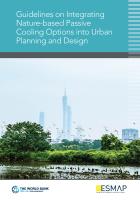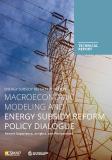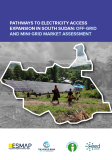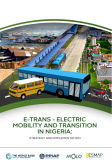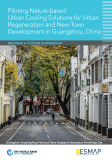Publications
Due to rapid urban expansion, the Urban Heat Island (UHI) Effect is one of the fastest-growing climate challenges threatening Guangzhou’s future development. The highest temperature in Guangzhou can reach 39.3 Degree Celsius (China Meteorological Administration, 2020). Rising temperatures lead to an increase in energy consumption and threaten the health of Guangzhou’s citizens. By July 2020, electricity consumption has increased 24 percent from 2019 levels (National Energy Information Platform, 2020). For every degree of temperature increase, electricity consumption in Guangzhou will increase by 2.7 percent with residential energy consumption constituting one-third of the increase (Zheng et al., 2020). Moreover, according to Guangdong Provincial Center for Disease Control and Prevention (2013), heat waves could increase mortality by 4.8 percent. It is urgent to address the increasing temperature and extreme events caused by the UHI Effects in Guangzhou. There is a dire need for immediate solutions to the various risks presented by UHI and climate change. Many cities around the world have already established an integrated urban cooling system through multi-sector collaboration, including Singapore, New York, Sydney, and others. Inspired by their experiences, the World Bank in collaboration with Guangzhou Urban Planning and Design Survey Research Institute, developed the Guidelines on Integrating Nature-based Cooling Solutions into Urban Planning and Design. The Guidelines provide a comprehensive toolkit including 39 cooling strategies to mitigate UHI across scales. Through this report, we address solutions and actions from five dimensions to alleviate UHI effects in Guangzhou: protecting large ecological assets, improving ventilation, promoting permeable surfaces, highlighting the function of city morphology and urban design, and applying green infrastructure.
Wang, Xueman.
Guidelines on Integrating Nature-based Passive Cooling Options into Urban Planning and Design (English). Washington, D.C. : World Bank Group. http://documents.worldbank.org/curated/en/099341202212324606/IDU08c08ad2e07cd50444d0b8750b7044248c196
